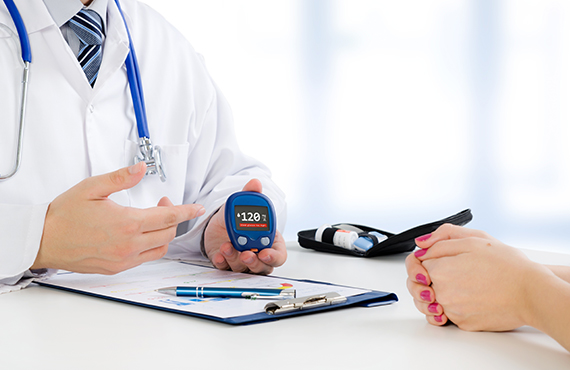
About The Shoulder
- Muscles
- Shoulder Conditions
- Shoulder Replacement Surgery
- Reverse Shoulder Replacement
- Shoulder Instability
- Frozen Shoulder Treatment
- Shoulder Impingement Treatment
- Rotator Cuff Tear Treatment
- Arthroscopic Shoulder Surgeries
- Slap (Superior Labrum Anterior To Posterior) Tears
- Latarjet & Remplissage Surgery
- Shoulder Arthritis Treatment
- Calcific Tendonitis
- Examination

Quick Contact Here
+91 22 23062035
022 - 23012732

Watch Our Video

SLAP TEAR REPAIR IN MUMBAI
A SLAP tear, or Superior Labrum Anterior to Posterior tear, is an injury to the labrum—the ring of cartilage that stabilizes the shoulder socket (glenoid). In a SLAP tear, the top (superior) part of the labrum is damaged, extending from the front (anterior) to the back (posterior) of the socket, where the biceps tendon attaches to the labrum.
This injury is common among athletes involved in overhead sports (like cricket, tennis, swimming, or baseball) and also affects individuals with repetitive shoulder use or age-related wear and tear.
SLAP Tear Repair by Dr. Chintan Desai – Trusted Shoulder Surgeon in Mumbai
Dr. Chintan Desai is a highly experienced orthopaedic and arthroscopic shoulder surgeon in Mumbai, specializing in shoulder injuries including SLAP tears. He uses advanced arthroscopic techniques for diagnosing and repairing labral tears with precision and minimal invasiveness.
Patients across Mumbai trust Dr. Desai for personalized care, accurate diagnosis, and faster recovery plans tailored to their lifestyle and activity levels.
What are the Causes of SLAP Tear?
SLAP tears can be caused by:
-
Repetitive Overhead Movements
Activities like throwing, swimming, and lifting weights repeatedly put stress on the shoulder joint, leading to labral damage over time. -
Trauma or Injury
Falling on an outstretched hand, a sudden pull on the arm, or a shoulder dislocation can lead to a SLAP tear. -
Aging and Degeneration
With age, the labrum naturally becomes more fragile, making it prone to tears with minor movements or stress. -
Heavy Lifting
Lifting heavy objects, especially without proper technique or support, can strain the shoulder joint and lead to a labral injury. -
Accidents or Impact
Direct trauma to the shoulder in road accidents or sports collisions can also result in a SLAP lesion.
What are the Symptoms of SLAP Tear?
The symptoms of a SLAP tear may overlap with other shoulder conditions, which is why accurate diagnosis by a shoulder specialist like Dr. Chintan Desai is essential.
Common SLAP Tear Symptoms Include:
- Deep shoulder pain (often hard to pinpoint)
- Clicking, popping, or grinding during shoulder movement
- Weakness in the arm or shoulder
- Reduced range of motion
- Pain during overhead movements or lifting
- A feeling of instability in the shoulder
- Night-time discomfort when lying on the shoulder
Diagnosis of SLAP Tear
Dr. Desai uses a combination of clinical tests, physical examination, and MRI with contrast to confirm a SLAP tear. Diagnostic arthroscopy may also be performed to provide a more detailed examination of the shoulder joint, particularly in complex cases.
SLAP Tear Treatment Options
Depending on the severity of the tear and the patient's age, activity level, and shoulder stability, treatment options include:
1. Conservative (Non-Surgical) Treatment
- Rest and activity modification
- Anti-inflammatory medications
- Physiotherapy to strengthen shoulder muscles
- Corticosteroid injections (in some cases)
2. Surgical Treatment – Arthroscopic SLAP Repair
If non-surgical methods fail to relieve symptoms, arthroscopic SLAP tear repair is the preferred solution.
Arthroscopic SLAP Tear Repair in Mumbai
Arthroscopic surgery is a minimally invasive procedure performed through small incisions using a camera (arthroscope) and tiny instruments.
Procedure Highlights:
- The torn labrum is reattached to the shoulder socket using tiny anchors and sutures.
- Biceps tenodesis may be performed if the biceps tendon is also involved.
- The procedure usually lasts 1–2 hours.
- Patients go home the same day or after an overnight stay.
Advantages of SLAP Tear Repair Surgery
Dr. Chintan Desai uses state-of-the-art arthroscopic techniques that offer:
- Minimal Scarring
- Faster Healing and Recovery
- Precise Repair with Less Tissue Damage
- Lower Risk of Infection
- High Success Rate in Restoring Shoulder Function
When Should You Consider SLAP Tear Surgery?
You should consider SLAP tear repair if:
- Pain persists despite 3–6 months of physiotherapy
- You experience frequent clicking or instability
- Your work or sport demands overhead movement
- You have a history of shoulder dislocation or trauma
- MRI confirms a torn labrum with biceps involvement
Frequently Asked Questions (FAQs)
Is SLAP tear repair a major surgery?
No, it's a minimally invasive arthroscopic procedure done under general or regional anesthesia.
Can SLAP tears heal without surgery?
Some mild tears can improve with rest and physiotherapy, but larger or symptomatic tears often need surgery.
Will I regain full shoulder function after surgery?
Most patients recover full or near-full shoulder function with proper rehabilitation.
Is the surgery painful?
Pain is manageable with medication and usually decreases significantly after the first week.
When can I return to sports or gym?
Typically within 4–6 months depending on the extent of the tear and progress in rehabilitation.
